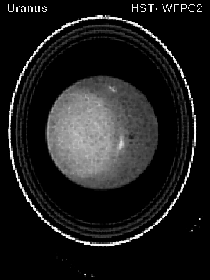This image, taken by Hubble, clearly shows Uranus and its rings.
Click on image for full size
Courtesy of NASA
Discover Uranus
Astronomer William Herschel is credited with the discovery of Uranus in 1781. He was using a telescope he built himself when he spotted a dim object. He monitored it for years and determined it had to be a planet given its orbit.
Herschel argued with other astronomers over the new planet's name. He wanted to name it after King George III of Great Britain while others wanted him to name it after himself. Finally, they opted to follow suit and name it after an ancient god. Uranus was named after Ouranos, one of the first gods in Greek mythology.
Most of what we know today about this distant planet came from the Voyager II flyby in 1986. Uranus is a very odd planet. It sits on its side with the north and south poles sticking out the sides. It rotates about this axis, giving the appearance of a ball rolling around in a circle about the Sun.
Although Herschel discovered two of the planet's satellites in 1781, a majority were spotted by Voyager II. The current total number of moons for Uranus is 21, the largest number for any planet in our solar system. With the help of more powerful telescopes, more moons may be revealed.
In 1977, scientists from Cornell University watched as Uranus appeared to blink several times. They later realized the blinking was caused by a band of faint rings surrounding the planet. These rings are very dark and narrow, unlike Saturn's, which are bright and colorful. Voyager II sent back many pictures that clearly show these rings.
You might also be interested in:

Uranus has // Call the moon count function defined in the document head print_moon_count('uranus'); fascinating moons and a complicated ring system. The ring system is a completely different form of ring
...more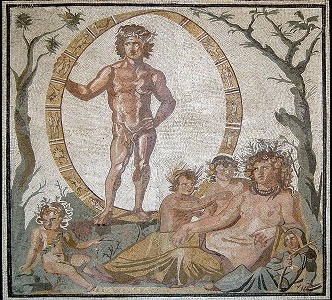
Uranus, which was discovered by William Herschel in 1781, was unknown in ancient times. Astronomers decided to continue the practice of naming planets after deities in Greek and Roman mythology, so named
...more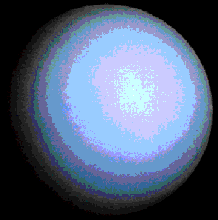
The bland aquamarine face of Uranus bears witness to the fact that Uranus is enshrouded in clouds. The planet appears to be blue-green because the atmosphere absorbs the red wavelengths of the visible
...more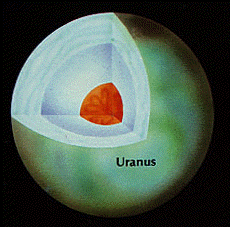
The Giant planets do not have the same kind of structure inside that the terrestrial planets do. Their evolution was quite different than that of the terrestrial planets, and they have much more gas and
...more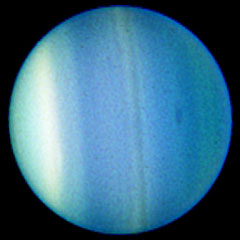
Uranus is the tilted planet. Its spin axis, which defines the locations of its North and South Poles, is tilted almost 98┬░ away from the "upright" direction perpendicular to its orbital plane. In other
...more
Atmospheres of the giant planets have definitely evolved from their formation out of the primitive solar nebula. How much they have evolved remains to be seen, however. Because of their enormous gravity,
...more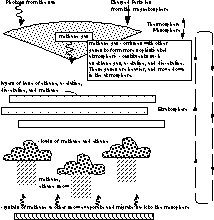
The major gaseous constituent of the atmosphere is methane. At the uppermost reaches of the atmosphere, near the thermosphere, methane gas breaks apart due to the influence of energetic photons or charged
...more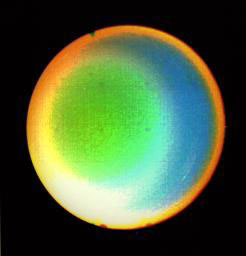
Motions in the atmosphere include wind. The major winds in the Uranian atmosphere are the zonal winds which consist of westward flowing zones and eastward flowing belts. The other major means of motion
...more


